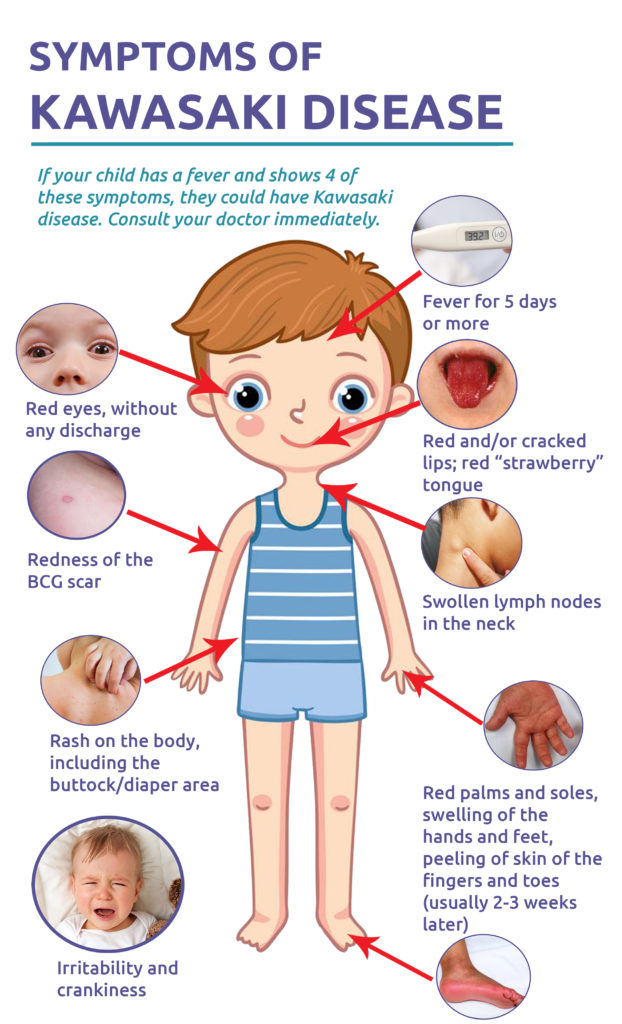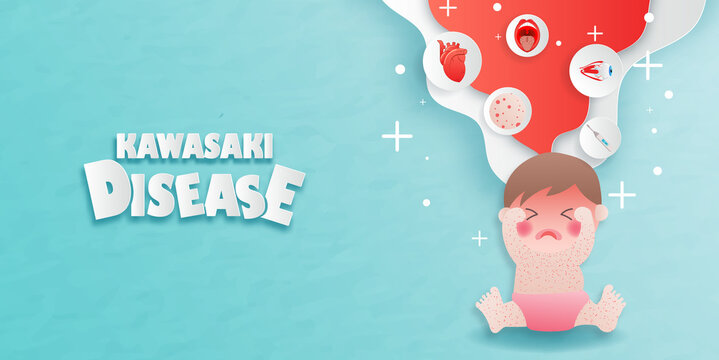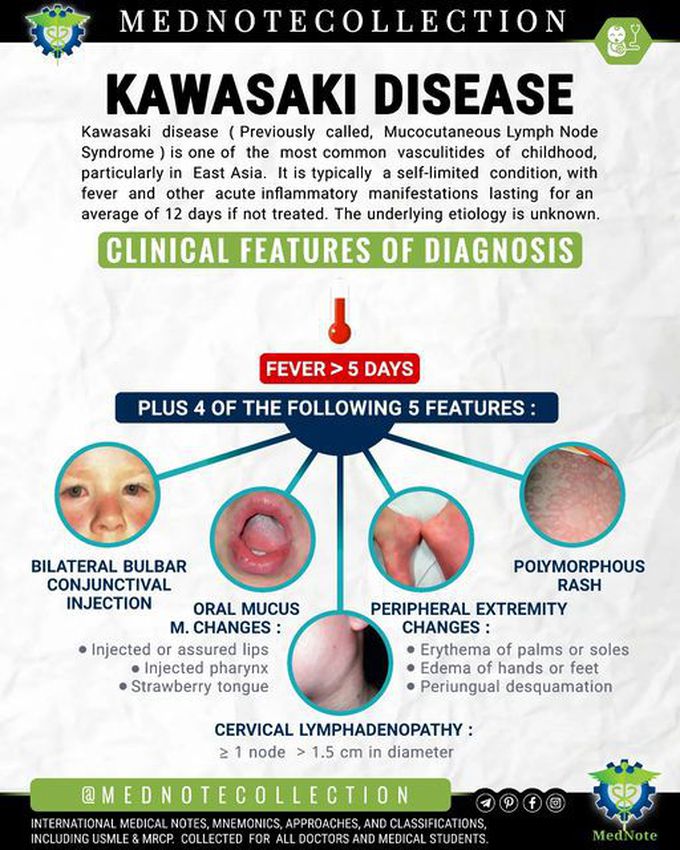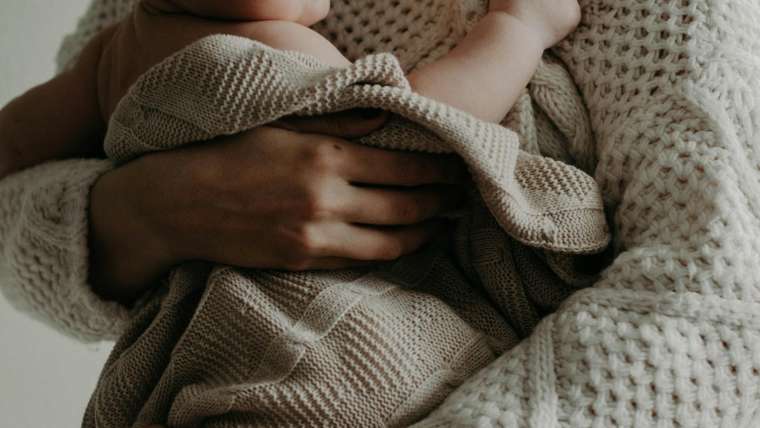Curious about Kawasaki Disease? Discover the symptoms, causes, and treatment options in this eye-opening blog post on a rare condition.
Table of Contents
- Introduction to Kawasaki Disease
- The Symptoms of Kawasaki Disease
- The Causes of Kawasaki Disease
- How Is Kawasaki Disease Diagnosed?
- How Is Kawasaki Disease Treated?
- Connection between Kawasaki Disease and Blood Pressure
- Preventing Kawasaki Disease
- Recovery and Care After Kawasaki Disease
- Common Misconceptions
- Diseases Not Related to Kawasaki Disease
- Conclusion – Understanding Kawasaki Disease
- Frequently Asked Questions (FAQs)
Introduction to Kawasaki Disease
We’ll learn about a disease named Kawasaki disease, what it is, and why it’s important to know about it.
What Is It?
Kawasaki disease is a sickness that can make kids feel really sick. It can cause their bodies to have problems, especially with their hearts. When someone has Kawasaki disease, it’s like their body is fighting off a bad invader that it can’t see.
Who Does It Affect?
Kawasaki disease mostly affects kids who are younger than 5 years old. Kids are more likely to get it than grown-ups. So, it’s important for parents and doctors to know the signs of Kawasaki disease to help kids feel better.
The Symptoms of Kawasaki Disease
One of the signs that someone might have Kawasaki disease is having a fever and red eyes. When you have a fever, your body temperature goes up, and your eyes might look red and swollen. This is one way to tell if someone could have Kawasaki disease.
Rashes and Red Lips
Another symptom of Kawasaki disease is having rashes and red lips. Rashes are red bumps or spots that show up on your skin, and red lips can happen when your lips are swollen and have a bright red color. Kids with Kawasaki disease often have these symptoms, so it’s important to look out for them.
The Causes of Kawasaki Disease
Doctors are still trying to figure out the exact causes of Kawasaki disease. Even though they aren’t completely sure, they have some ideas about what might lead to this illness.

Image courtesy of healthwaymedical.com via Google Images
Possible Triggers
One thought is that Kawasaki disease could be triggered by a germ, like a virus or a bacteria. These tiny things can sneak into our bodies and cause a big reaction in some kids, leading to Kawasaki disease.
Genetic Factors
Another idea is that certain genes might play a role in who gets Kawasaki disease. Genes are like tiny instruction manuals in our bodies that can sometimes make someone more likely to have this illness.
Environmental Factors
Some researchers believe that things in our environment, like pollution or chemicals, could also be linked to Kawasaki disease. Our surroundings can sometimes affect our health in ways we don’t fully understand yet.
How Is Kawasaki Disease Diagnosed?
When a doctor suspects that a child might have Kawasaki disease, they will examine the symptoms carefully and perform specific tests to confirm the diagnosis.
Doctor’s Visit
During a visit to the doctor, they will ask about the child’s symptoms and medical history. The doctor will look for common signs of Kawasaki disease, such as fever, red eyes, rashes, and red lips. They will also check for other symptoms like swollen lymph nodes and changes in the hands and feet.
Tests They May Do
To confirm the diagnosis, the doctor may order blood tests to check for signs of inflammation in the body. They might also perform an echocardiogram to look at the heart and see if there are any abnormalities. Other tests, like a chest X-ray or a urinalysis, may also be done to rule out other conditions.
How Is Kawasaki Disease Treated?
When a kid is diagnosed with Kawasaki disease, doctors have specific treatments to help them feel better. Let’s take a look at some of the ways they can be treated.

Image courtesy of www.istockphoto.com via Google Images
Medicines
Doctors prescribe special medicines to kids with Kawasaki disease. These medicines help to reduce inflammation in the body and calm down the disease. By taking these medicines, kids can start feeling better and get back to their normal selves.
Hospital Stay
Sometimes, kids with Kawasaki disease need to stay in the hospital for a little while. This is to make sure they get the extra care they need. The doctors and nurses in the hospital will closely monitor them to ensure they are on the right track to recovery. While it might feel a bit scary to be in the hospital, it’s all to help the kids get better faster.
Connection between Kawasaki Disease and Blood Pressure
When a child is diagnosed with Kawasaki disease, their health might not just be affected by the typical symptoms associated with this condition. Interestingly, Kawasaki disease can also have an impact on their blood pressure. Let’s dive into how this disease can cause fluctuations in blood pressure, leading to it being either high or low.
High Blood Pressure
One of the complications that Kawasaki disease can bring about is the possibility of high blood pressure in affected children. High blood pressure, also known as hypertension, can put extra strain on the heart and blood vessels. It’s essential for doctors to monitor the blood pressure of children undergoing treatment for Kawasaki disease to prevent any further complications.
Low Blood Pressure
On the contrary, there are instances where Kawasaki disease may lead to low blood pressure in some children. Low blood pressure, also called hypotension, can cause dizziness, fainting, and fatigue as the body may not be receiving enough oxygen and nutrients. Doctors need to carefully manage the blood pressure of children with Kawasaki disease to ensure their bodies are functioning optimally.
| Question | Answer |
|---|---|
| What is Kawasaki Disease? | Kawasaki Disease is a rare childhood illness that causes inflammation in the walls of medium-sized arteries throughout the body. |
| Who does it affect? | It primarily affects children under the age of 5, with the majority of cases occurring in children between 1-2 years old. |
| What are the symptoms? | The symptoms of Kawasaki Disease include high fever, rash, red eyes, swollen lymph nodes, and redness and swelling of the hands and feet. |
| How is it treated? | Treatment typically involves intravenous immunoglobulin (IVIG) and aspirin to reduce inflammation and prevent complications. |
Preventing Kawasaki Disease
While we can’t always prevent Kawasaki disease from happening, there are some things we can do to help keep our bodies strong and healthy to lower the risk of getting sick. Here are some tips:

Image courtesy of www.shutterstock.com via Google Images
Eating Healthy Foods
Eating fruits, vegetables, whole grains, and lean proteins can help our bodies stay strong and fight off illnesses like Kawasaki disease. These foods give us the nutrients we need to stay healthy and fuel our bodies.
Exercising Regularly
Playing outside, riding bikes, or doing sports are fun ways to stay active and keep our hearts strong. Exercise helps our bodies stay fit and boosts our immune system, which can make it easier to fight off infections.
Washing Hands Frequently
Washing our hands often with soap and water can help stop germs from spreading. Germs can make us sick, so keeping our hands clean is an easy way to stay healthy and prevent diseases like Kawasaki.
Getting Plenty of Sleep
Sleeping is important for our bodies to recharge and stay healthy. Making sure we get enough sleep each night can help our immune systems stay strong and ready to fight off illnesses.
By eating healthy, exercising, washing our hands, and getting enough sleep, we can help keep our bodies strong and less likely to get sick with diseases like Kawasaki disease.
Recovery and Care After Kawasaki Disease
After a child gets better from Kawasaki disease, it’s essential to continue providing care to ensure their heart stays happy and healthy. Let’s learn about the steps needed for recovery after battling Kawasaki disease.
Careful Monitoring
It’s crucial to keep a close eye on the child’s health even after they leave the hospital. Regular check-ups with the doctor will help ensure that any lingering effects of the disease are detected early.
Healthy Lifestyle
Encouraging the child to lead a healthy lifestyle is vital in preventing future heart problems. This includes eating nutritious foods, staying active, and getting enough rest.
Continued Medication
In some cases, the child may need to continue taking medication to prevent any recurrence of Kawasaki disease. It’s important to follow the doctor’s instructions carefully and ensure the child takes the prescribed medication as directed.
Social and Emotional Support
Recovering from a serious illness like Kawasaki disease can be overwhelming for both the child and their family. Providing emotional support, talking about feelings, and seeking help from counselors or support groups can help everyone cope better.
By following these steps and providing continuous care and support, children who have battled Kawasaki disease can look forward to a healthier future.
Common Misconceptions
Let’s clear up some wrong ideas people might have about Kawasaki disease. One common misconception is that Kawasaki disease has nothing to do with riding a motorcycle! It’s actually a serious illness that can affect kids, especially those younger than 5 years old.

Image courtesy of stock.adobe.com via Google Images
Diseases Not Related to Kawasaki Disease
Kawasaki disease might sound like it has something to do with a sore throat, but they are actually quite different. When you have a sore throat, it’s usually because of a virus or bacteria making your throat feel scratchy and uncomfortable. Remedies like drinking warm tea with honey or taking throat lozenges can help soothe a sore throat. However, Kawasaki disease is a lot more serious and can cause problems with your heart if not treated properly. So, it’s essential to remember that Kawasaki disease is more than just a sore throat!
Kawasaki vs. Hepatitis
Kawasaki disease is not connected to hepatitis, which is a liver disease caused by different viruses like hepatitis A or hepatitis C. While both conditions can affect your body, they are distinct diseases with separate causes and treatments. Hepatitis can be transmitted through things like contaminated food or water, while Kawasaki disease is not contagious in the same way. It’s important to realize that each disease needs specific care from doctors, depending on what is causing it. So, it’s vital to understand the differences between Kawasaki disease and hepatitis types to get the right treatment for each one.
Conclusion – Understanding Kawasaki Disease
Throughout this article, we have delved into the world of Kawasaki disease, understanding what it is and why it’s essential to be aware of it. Kawasaki disease is a condition that primarily affects young children, especially those under 5 years of age. It can manifest through various symptoms such as fever, red eyes, rashes, and red lips, making it crucial to recognize the signs early on.

Image courtesy of medizzy.com via Google Images
While the exact causes of Kawasaki disease remain uncertain, doctors have developed methods to diagnose it through a series of tests like blood tests and heart checks. Once diagnosed, treatment usually involves medication to alleviate the symptoms and, in severe cases, may require hospitalization for additional care.
An interesting aspect to note about Kawasaki disease is its potential impact on blood pressure, with some children experiencing fluctuations in either high or low blood pressure. Understanding this connection can aid in managing the disease effectively and providing the necessary care.
Preventative measures for Kawasaki disease are still under investigation, emphasizing the importance of maintaining overall health to strengthen the body’s immune system. Additionally, after recovery, it’s crucial to continue with post-care to ensure the heart remains healthy and happy.
Dispelling common misconceptions about Kawasaki disease, such as it not being related to riding motorcycles, is vital to spreading accurate information and fostering understanding in communities. Recognizing the distinctions between Kawasaki disease and other ailments like sore throats or hepatitis further enhances our comprehension of the condition.
Overall, raising awareness about Kawasaki disease and ensuring timely intervention and treatment can significantly impact children’s health outcomes. By remaining informed and proactive, we contribute to creating a healthier environment for all individuals. Remember, knowledge is power when it comes to understanding and handling diseases like Kawasaki.
Frequently Asked Questions (FAQs)
Can Kawasaki Disease Happen More Than Once?
Yes, it is possible for kids to get Kawasaki disease more than once, although it is rare. Most kids who have had Kawasaki disease typically do not get it again. The good news is that doctors have treatments that can help kids feel better and recover well, even if they do get the disease a second time.
How Long Does It Take to Feel Better?
After receiving the proper treatment for Kawasaki disease, it usually takes a few weeks for kids to start feeling better. However, every child is different, and some may take longer to fully recover. It’s important for kids to follow their doctor’s advice, take their medicines, and get plenty of rest to help their bodies heal and get back to feeling healthy again.




